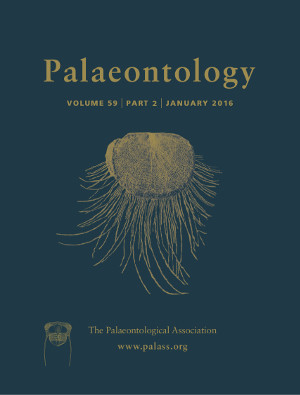Reg. Charity No. 1168330

The compound eyes of three taxa of Rhenish Lower Devonian eurypterids are examined and compared with those known from other eurypterids and the extant horseshoe crab Limulus polyphemus. The lateral eyes of the small species Rhenopterus diensti, a phylogenetically basal representative of the stylonurine clade, are characterized by a comparatively low number of lenses and high interommatidial angle Δφ (2.8°). The comparatively limited visual capacities of R. diensti are more similar to L. polyphemus than to its closer relatives of the eurypterine clade and perhaps this reflects a progression of lateral eye structure in the evolution of eurypterids as a whole. The number of eye facets in Adelophthalmus sievertsi is higher than that in the supposed ambush predator Acutiramus cummingsi, but lower than that in other ‘swimming’ eurypterids (Eurypterina). Due to poor preservation, no other eye parameters could be analysed in this species, but further morphological attributes and geographical distribution designate the mid‐sized A. sievertsi as an able swimmer. A low interommatidial angle Δφ of less than 1° confirms that the visual capacities of Jaekelopterus rhenaniae are in line with an interpretation of this giant species as an active high‐level predator. The inferred lifestyles of adult individuals of these three, co‐occurring Rhenish eurypterids indicate niche differentiation avoiding to some degree the competition for food in their marginal marine to delta plain transitional habitats.